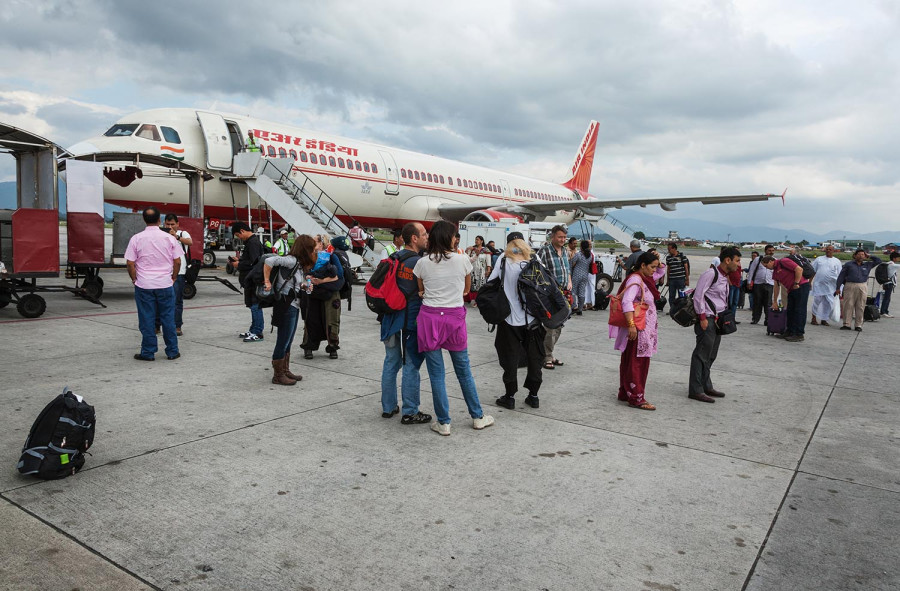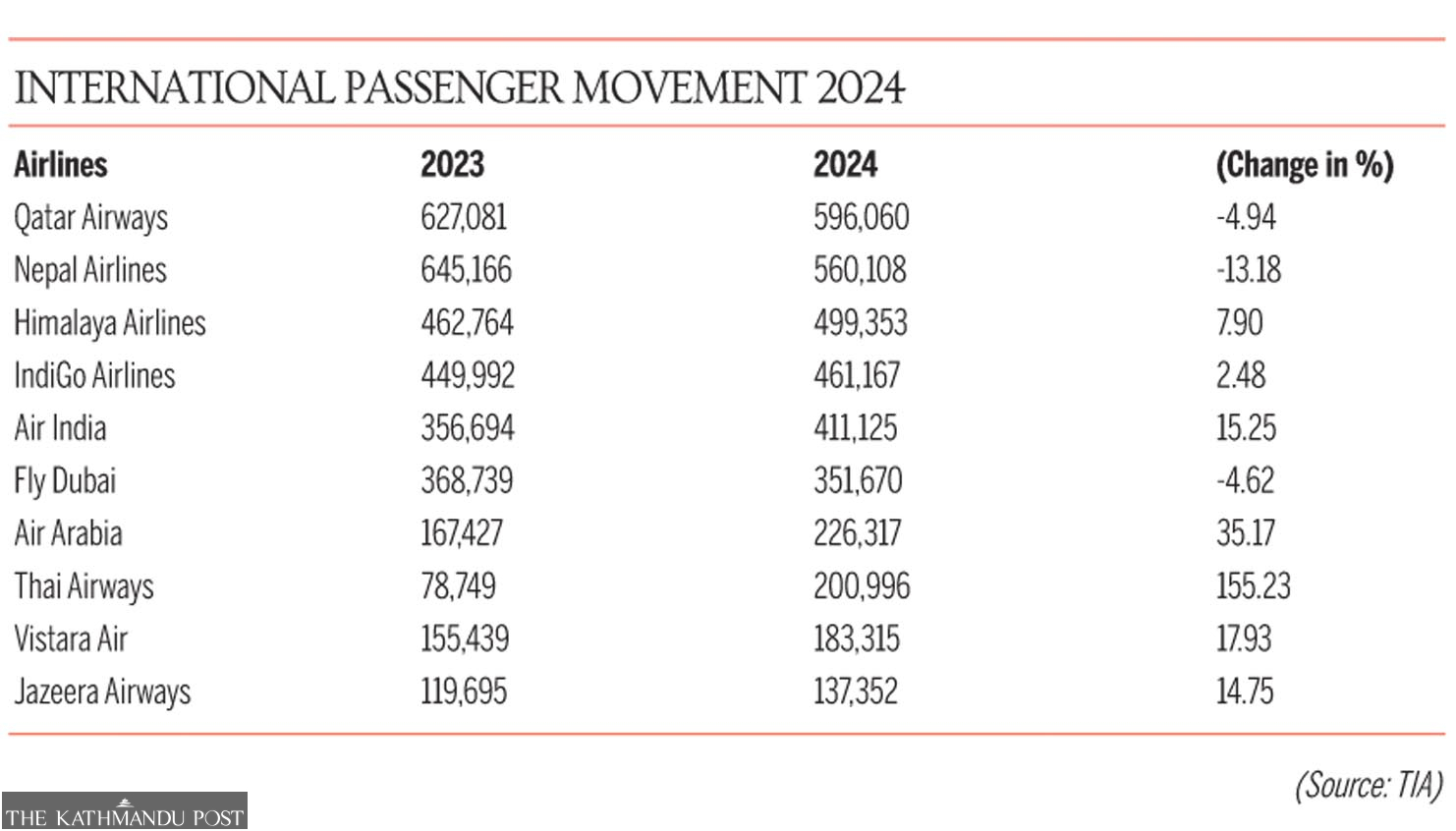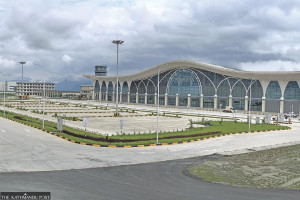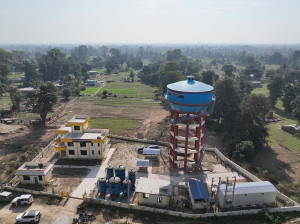Money
Kathmandu airport nears 5 million international flyers
The number reached a record 4.96 million in 2024, driven by tourism, migration, and student travel.
Sangam Prasain
International passenger traffic at Kathmandu’s Tribhuvan International Airport (TIA) has surged nearly fivefold since 2000, when it handled just a million flyers.
In 2024, the airport recorded a historic 4.96 million international travellers, driven by a surge in tourist arrivals, outbound Nepali migrant workers, and students heading abroad.
Passenger traffic has grown significantly post-Covid, largely due to an exodus of migrant workers and students. Analysts also note a sharp rise in family members travelling abroad to visit their loved ones.
Last year, Nepal welcomed over a million foreign tourists, while an equal number of migrant workers and students left.
According to TIA data, international passenger traffic grew 9.29 percent year-on-year in 2024, averaging 13,598 a day.
Before the pandemic, 2018 was the airport’s busiest year, with 4.38 million international travellers. Post-Covid, numbers rebounded to 4.54 million in 2023, marking a 30.18 percent increase from 2022.
On flight movements, the airport handled 33,247 takeoffs and landings in 2024, a 5.68 percent rise from the previous year. On average, 90 international flights operated daily.
“Post-Covid, we have seen a sharp rise in travel of students and their family members, significantly contributing to passenger growth,” said Hansa Raj Pandey, spokesperson for the Civil Aviation Authority of Nepal.
However, TIA continues to grapple with operational limits due to infrastructure constraints.
Since November 2024, the airport had been shutting down for 10 hours a day (10 pm–8 am) to facilitate the construction of a new taxiway link to the existing runway.
The closure will continue until March 31. However, recent adjustments have extended the airport’s operational hours from 11 pm to 7 am.
Pandey said that the airport's capacity will increase substantially once the parallel taxiway project is complete by the end of 2026, allowing it to accommodate more flights and passengers.
Nepal lifted all Covid-related travel restrictions on March 5, 2022, reopening to foreign tourists on March 10 of the same year by removing pre-arrival testing requirements.
Consequently, tourist arrivals rebounded strongly. Nepal received 1.01 million tourists in 2023—a 65 percent increase from 2022. In 2024, that figure reached 1.14 million, though still shy of the pre-pandemic peak of 1.19 million in 2019.
Qatar Airways was the leading international carrier at TIA in 2024, flying 596,060 passengers. However, this marked a 4.94 percent dip from 2023 when it carried 627,081 travellers.

Nepal Airlines slipped to second place in passenger volume, experiencing a double-digit decline. The national carrier transported 560,108 passengers in 2024, down 13.18 percent year-on-year.
A Nepal Airlines official, speaking on condition of anonymity, attributed the slump to simultaneous C-checks—comprehensive aircraft inspections—that grounded its fleet.
A widebody aircraft sent to Italy for a C-check in mid-June 2024 was grounded for two and a half months, causing operational disruptions that led to flight cancellations and passenger offloading.
Before the Covid pandemic, in 2019, Nepal Airlines had flown 735,835 passengers.
Himalaya Airlines, a Nepal-Tibet joint venture, saw a 7.90 percent increase in passenger numbers, reaching 499,353 in 2024.
Indian low-cost carrier IndiGo also recorded growth, flying 461,167 passengers, a 2.48 percent increase from the previous year. Air India posted a strong 15.25 percent rise in passenger traffic, carrying 411,125 travellers in 2024.
Vistara Airlines registered the biggest growth among Indian carriers, with a 17.93 percent year-on-year increase, flying 183,315 passengers. The airline, which began Kathmandu operations in February 2020, merged with Air India on November 12, 2024.
Dubai-based low-cost carrier FlyDubai saw a 4.62 percent drop in passenger volume, flying 351,670 travellers in 2024. Conversely, Air Arabia recorded significant growth, transporting 226,317 passengers—an increase of 35.17 percent compared to 2023.
Thai Airways, which resumed Nepal operations in November 2023 after suspending flights in April 2020 due to the Covid pandemic, carried 200,996 passengers in 2024.
Likewise, Kuwait-based Jazeera Airways, which launched its Kathmandu operations in November 2019, ferried 137,352 passengers in 2024, reflecting a 14.75 percent increase from the previous year.
As Nepal’s aviation sector rebounds, experts anticipate further growth in passenger traffic, driven by increasing outbound migration, student travel, and tourism.
Pandey said infrastructure improvements, such as the completion of the parallel taxiway, will be vital in meeting rising demand and alleviating congestion at Tribhuvan International Airport.




 8.12°C Kathmandu
8.12°C Kathmandu













